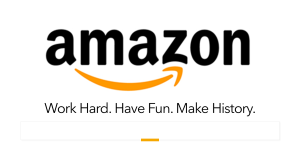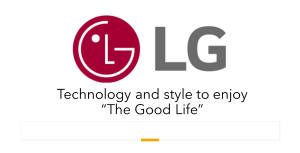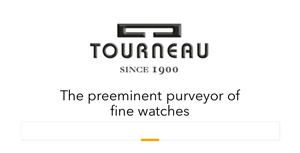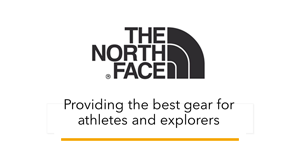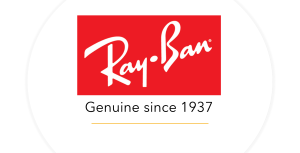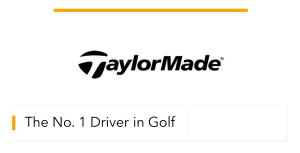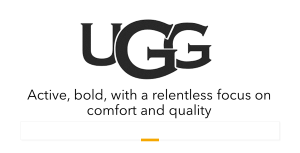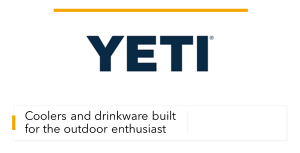Human Capital Impact Part 2: IRR Field Will Benefit - the Question Is How
In part 2 of this series of interviews with executives in the Incentive, Recognition, and Rewards (IRR) field, most believe that the new focus on human capital management is real and will have an impact on their businesses, but it’s not clear yet how the IRR industry specifically will capitalize on this opportunity in terms of offering broader solutions, if any.
- Richard Garlick, The IRF, Richard Garlick & Associates
- Richelle Suver, One10 Marketing
- Brian Galonek, All Star Incentive Marketing
- Allan Schweyer, The IRF, Center for Human Capital Innovation
- Rick Blabolil, Marketing Innovators Inc.
 In Part 1 of this two-part series of interviews with executives in the Incentive, Rewards, and Recognition (IRR) field, there was general agreement that the human capital management and reporting movement would have an impact, but little consensus on how. As the president of a major incentive company says under condition of anonymity, “Everyone in the IRR field knows that the human capital management movement has arrived. Many just don’t know what to do about it.” See: RRN: Mixed Response in IRR Industry to Rise of Human Capital Management.
In Part 1 of this two-part series of interviews with executives in the Incentive, Rewards, and Recognition (IRR) field, there was general agreement that the human capital management and reporting movement would have an impact, but little consensus on how. As the president of a major incentive company says under condition of anonymity, “Everyone in the IRR field knows that the human capital management movement has arrived. Many just don’t know what to do about it.” See: RRN: Mixed Response in IRR Industry to Rise of Human Capital Management.
Among those interviewed, there is almost universal agreement that the human capital management movement has arrived and is sustainable. The question remains: what specific types of solutions and services will the IRR industry provide to assist with strategic human capital management and how will they monetize it?
Richard Garlick, The IRF, Richard Garlick Associates.
“It’s real,” says Richard Garlick, Chief Research Advisor, The Incentive Research Foundation, and Principal Consultant of Richard Garlick & Associates. “On June 16, 2021, the US House of Representatives passed legislation that would impose new Environmental, Social, Governance (ESG) due diligence and disclosure requirements on publicly traded companies. HR 1187 – the ESG Disclosure Simplification Act of 2021 – would require publicly traded companies to disclose their commitments to ensuring that environmental, social (human rights), and good governance standards are reflected in their operations, activities, and supply chains. While like many bills in Congress, it is on the back-burner due to other priorities, it’s still out there as a possibility, at least if Democrats hold the Congress. It shows the seriousness of the issue.” In addition, the Securities & Exchange Commission is expected to soon issue draft regulations for the disclosure of human capital metrics whose approval usually does not involve Congressional action.
Garlick believes it’s a “tremendous opportunity for the IRR business. He says his consulting firm “has an entire approach for measuring stakeholder impact that includes both quantitative and qualitative research. With this business intelligence, no one must fly blind into these new times, relative to how new standards will potentially impact their businesses. In some cases, it may be about prioritizing certain stakeholders over others, which is often a challenging choice. But better to be informed than not.”
That said, he cautions against assumptions that all people are willing to pay more to buy from companies known to be socially good. The answer to this question, he notes, often gets caught up in politics, with Democrats more likely to be affected by social issues than Republicans in their buying patterns.
Richelle Suver, One10 Marketing
Richelle Suver, Vice President of Dayton, OH-based One10Marketing, agrees “that human capital has received an increased priority in many companies, particularly coming out of the last two years of workforce changes and the pandemic. The value of corporate talent is more acutely recognized and as a result, companies are aligning more of their initiatives around well-being, ensuring employees feel adequately fulfilled and developed to their potential. In addition, leaders are re-establishing the future framework for talent in their organizations.”
She elaborates, “For most brands, a competitive differentiator is the people that represent them. Therefore, corporate stakeholders must continue to ensure that the engagement of their people is high. Engaged employees are advocates for their employers, often provide higher levels of service to their customers and as a result can impact financial results, productivity and other key metrics. Incentive and recognition solution providers are poised to be important contributors to helping corporations create a comprehensive plan and approach for companies that wish to take their human capital strategy to the next level."
Brian Galonek, All Star Incentive Marketing
Brian Galonek CEO of 50-year-old Fiskdale, MA based All Star Incentive Marketing, concurs. “The focus on human capital management was smoldering for decades as every company out there would tell you ‘our people are our greatest asset’ but few companies would actually act like that was true. What was once smoldering is now a raging fire as companies not only know it is true, but also know the truth about what it means. Their greatest asset is also their greatest threat, and a company with a poorly engaged workforce is unhealthy at best, and likely on its way to failure in most cases.”
Galonek believes that “one of the undisputed pillars of employee engagement is recognition. It is really table stakes at this point, meaning you can’t even be in the discussion if you are not making ‘recognition’ frictionless in your organization. Once you are doing that, and doing it well, you can begin to riff off of that foundation to expand your recognition program by targeting specific areas, like training, onboarding/orientation, team building, turnover, and truly all areas of operations in which the human condition is on display.”
Involvement by his company in program design will be critical, he believes. “This reality has been at the heart of our consultative process of onboarding new partners/clients for decades, and our attention to it will only grow in the years to come. We don’t ask the same questions we used to 30 years ago, such as what type of awards are you looking for? Instead, we start with one simple question that often has complex answers, ‘where does it hurt?’ We then actively listen to our clients discuss their issues, such as slumping sales, high turnover, accidents and injuries, training retention, etc. No matter what their specific issues are, the cure will always start with driving employee engagement higher as the path towards a solution.”
Allan Schweyer, The IRF, Center for Human Capital Innovation
Ask Allan Schweyer, Co-Chief Researcher to the Incentive Research Foundation, and Senior Executive Consultant and Researcher for the Center for Human Capital Innovation, Alexandria, VA, “If you are defining the human capital movement as a strategy to recruit great talent with an appealing culture, and a concern about employee engagement and retention, the answer is yes. It’s an enormous movement. It won’t go away, and it’s global.”
Says Schweyer, “Sure the IRR industry can benefit. Incentive programs are a huge component to end-to-end engagement. It’s about getting incentives right and addressing both intrinsic and extrinsic needs. I don’t think there’s a bigger component than motivation when you’re talking about human capital.”
He believes the IRR industry can benefit by focusing “much more on program design, measurement, and testing. The industry needs a more scientific approach. You should be experimenting, testing, and improving all the time.”
Rick Blabolil, Marketing Innovators Inc.
Definitions count, notes Rick Blabolil, President of Des Plaines, IL-based Marketing Innovators Inc., a 40-year-old incentive company in Rosedale, Ill., who sees the opportunity. “We need to make sure we understand or at least align on the definition of human capital management (HCM). As Gartner points out, it is a set of practices related to people resource management. The competencies are in essentially three categories: workforce acquisition, workforce management, and workforce optimization. As the employee continues to have a bigger voice in companies, employers are looking at HCM in a more holistic way, which includes the kinds of tools and initiatives provided by the IRR industry.”
Blabolil believes “it’s an enormous opportunity for companies and the IRR field. Companies spend an immense amount of time and resources setting their corporate strategy. That is not the specialty of the IRR industry. But where we see the opportunity is helping companies align their workforce actions and behaviors with those strategies. Culture is a big ‘catch-all’ and too often is loosely defined. We think companies are focused on workforce socialization and team-building in order to optimize results and develop talent. IRR can be an outstanding catalyst in these initiatives.”
There’s no need to change the company’s business model, Blabolil asserts. “We believe it is more about adapting our selling and implementation processes than doing any wholesale changes. In other words, continue to refine collaboration methods to create client-specific solutions. We believe this is best executed in a ‘mass customization’ format – there are a finite number of ingredients, but each client has its own set and mix of ingredients to fit its situation and needs.”
Click here to get RRN news delivered each week.
Education, Certifications, and Information to Activate
Brand Media and Enterprise Engagement
A complete learning, certification, and information program and a course syllabus for educators.
Resources: The Brand Media Coalition, the only guide to the story-telling power of brands and where to source them for business, event, promotional gifting, and rewards and recognition. Enterprise Engagement Solution Provider Directory. The only directory of engagement solution providers covering all types of agencies and tactics as well as insights on how to select them.
Communities: The Enterprise Engagement Alliance and Advocate and the Brand Media Coalition free resource centers offering access to the latest research, news, and case studies; discounts, promotions, referrals, and commissions, when appropriate to third-party solution providers from participating coalition solution provider members.
Training and Certification
Enterprise Engagement Alliance Education: Certified Engagement Practitioner; Advanced Engaged Practitioner, and Certified Engagement Solution Provider learning and certification programs on how to implement Stakeholder Capitalism principles at the tactical level.
International Center for Enterprise Engagement: The only training and certification program for ISO 30414 human capital reporting and ISO 10018 quality people management certification.
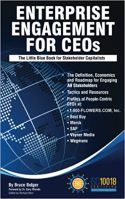
The EEA offers a complimentary course syllabus for educators.
In Print:
This is the definitive implementation guide to Stakeholder Capitalism, written specifically to provide CEOs and their leadership teams a concise overview of the framework, economics, and implementation process of a CEO-led strategic and systematic approach to achieving success through people. (123 pages, $15.99)
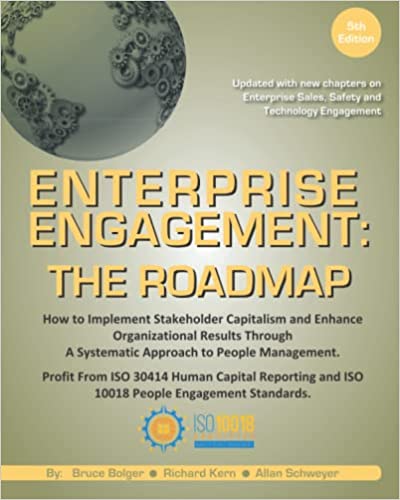
The first and most comprehensive book on Enterprise Engagement and the new ISO 9001 and ISO 10018 quality people management standards. Includes 36 chapters detailing how to better integrate and align engagement efforts across the enterprise. (312 pages, $36.)
Online:
10-minute short course: click here for a 10-minute introduction to Enterprise Engagement and ISO standards from the Coggno.com learning platform.
Services:
• The Engagement Agency at EngagementAgency.net, offering: complete support services for employers, solution providers, and technology firms seeking to profit from formal engagement practices for themselves or their clients, including Brand and Capability audits for solution providers to make sure their products and services are up to date.
• C-Suite Advisory Service—Education of boards, investors, and C-suite executives on the economics, framework, and implementation processes of Enterprise Engagement.
• Speakers Bureau—Select the right speaker on any aspect of engagement for your next event.
• Mergers and Acquisitions. The Engagement Agency’s Mergers and Acquisition group is aware of multiple companies seeking to purchase firms in the engagement field. Contact Michael Mazer in confidence if your company is potentially for sale at 303-320-3777.
Enterprise Engagement Benchmark Tools: The Enterprise Engagement Alliance offers three tools to help organizations profit from Engagement. Click here to access the tools.
• ROI of Engagement Calculator. Use this tool to determine the potential return-on-investment of an engagement strategy.
• EE Benchmark Indicator. Confidentially benchmark your organization’s Enterprise Engagement practices against organizations and best practices.
• Compare Your Company’s Level of Engagement. Quickly compare your organization’s level of engagement to those of others based on the same criteria as the EEA’s Engaged Company Stock Index.
• Gauge Your Personal Level of Engagement. This survey, donated by Horsepower, enables individuals to gauge their own personal levels of engagement.
For more information, contact Bruce Bolger at Bolger@TheEEA.org, 914-591-7600, ext. 230.







